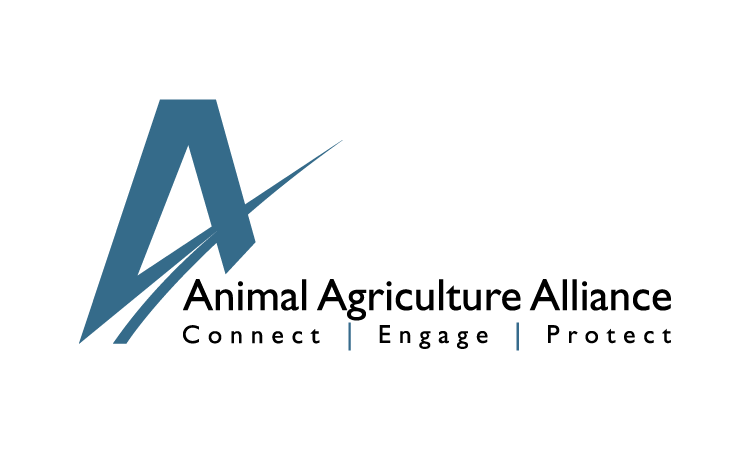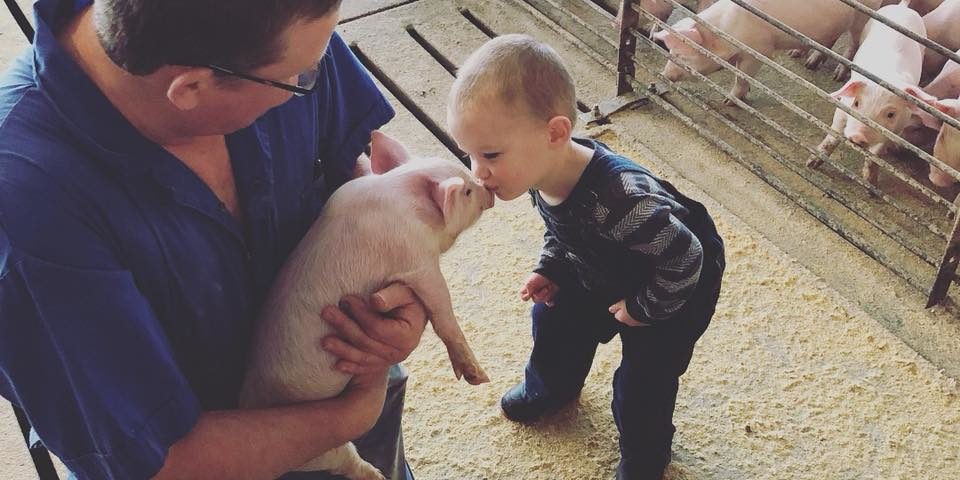Being a graduate student in Northern Virginia while working in the communication field for the animal agriculture industry definitely makes for interesting class conversations. At first I tried to keep all my facts, figures and stories in my papers instead of the class discussions to avoid any potential conflict – I was working full time, going to school full time and planning a wedding, so I really didn’t have much energy to talk much less debate. This didn’t last long because whenever agriculture was brought into the conversation I couldn’t help but speak up!
Most of my colleagues from school are interested in energy, climate change, weather and technology. Agriculture is involved in each of these areas, yet like most people, the students are usually generations removed from the farm. So, once I leave the office after a day of brainstorming communication strategies to bridge the gap between farm and fork I get to put my ideas into action in class.
Farming misconceptions
The students are not the only ones not familiar with animal agriculture. The professors also have misconceptions. In one of my classes, a professor likes to tailor all her lessons to relate to subjects students are studying which I find beneficial as it makes abstract theories and concepts easier to understand. But when the examples include misinformation I start squirming in my seat. The professor was explaining how agriculture has changed a lot over the years (which I agreed with). Then she said there used to be family farms and farmers who depended on their farm and livestock as their livelihood, but now family farms don’t exist anymore (cue my seat squirming) and it’s all corporate farms. I quickly told her and the rest of the class that there are still family farms and they still make up the vast majority of farms today.
Do family farms have to be small?
All of my research projects revolve around animal agriculture’s communication efforts to build trust with consumers. I was explaining one of my research projects which included interviewing farmers and ranchers about their social media habits to someone and he asked, “did you talk to family farms or big farms?” His question made me tilt my head to the side like a dog hearing a foreign noise. First, I answered his question explaining that all of the farmers I talked to were family farmers, meaning their farm is owned and operated by the family. Then I asked, “why can’t family farmers have big farms?” *crickets*
These interactions got me thinking about family farmers, farm size and the public perception of today’s family farms. Why is it that people think family farmers must be small and that big is automatically bad? Farms come in all types and sizes. I’ve talked to family farmers who only sell their eggs, cheeses and meats at farmers’ markets, farmers who raise chickens or pigs for a company that then takes care of the marketing and sales, farmers who have 15 head of cattle and others who have 150. Family farms are all very different, but one thing they have in common…they are all owned and operated by passionate, hardworking families.
Red barn or not, it can still be a family farm
Sure, today’s family farmers aren’t always standing outside that romanticized red barn, but that doesn’t make them any less of a family farm. Why should farmers be punished for growing from a small farm to a medium-sized farm or to a large farm? Why can’t farmers use technology to make their jobs more efficient? Some farmers also have side jobs because that’s what works best for their families, yet they love what they do so they keep showing up at the farmers’ market every Saturday morning at 3 a.m. Other farmers choose to work on the farm full time and have grown their farms to meet the needs of their expanding families – both choices are equally valid.
The farms that aren’t considered “family farms” shouldn’t be demonized either. They are not owned and operated by the family, but they still employ families and are part of communities. Because of their size, they often have enough resources to hire multiple veterinarians and animal care professionals to ensure livestock’s well-being is a priority. Larger farms often have the ability to donate large amounts of protein to local food banks too. Big doesn’t have to mean bad.
I try my best to always embrace farms of all sizes. Sometimes the marketing gimmicks can get annoying, but I know that no matter what kind of meat, milk or eggs I buy at the grocery store or at the farmers’ market, it came from a farm and I’m always happy to support farmers and ranchers.
All posts are the opinion of the author and do not necessarily represent the view of the Animal Ag Alliance.









